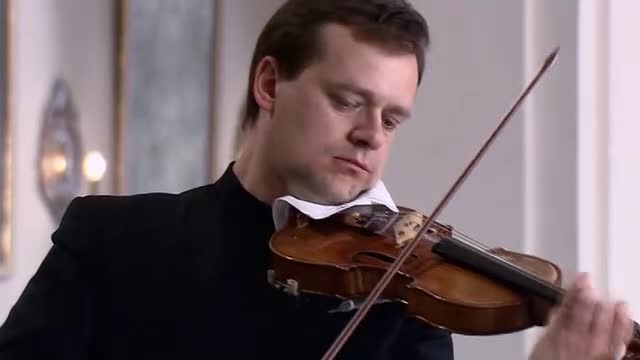Frank Peter Zimmermann, who began playing the violin at five and gave his first orchestral concert five years later, studied at the Essen Folkwang Hochschule with Valery Gradov, at the Staatliche Hochschule Berlin with Saschko Gawriloff, and from 1980 in Amsterdam with Hermann Krebbers. He made his debut in 1975 playing Mozart’s G major Concerto K. 216, and in the following year won the Jugend Musiziert competition. Zimmermann was then set on an international career, making his US debut in 1984 with the Pittsburgh Symphony Orchestra. He has given the premieres of Augusta Read Thomas’s Violin Concerto No. 3 ‘Juggler in Paradise’, Brett Dean’s violin concerto The Lost Art of Letter Writing, and in 2003 Matthias Pintscher’s violin concerto en sourdine.
Like many soloists Zimmermann also performs chamber music, working regularly with pianists Enrico Pace, Piotr Anderszewski and Emanuel Ax as well as with his own trio.
Zimmermann’s recordings reveal an approach that is versatile and malleable according to context. There is a clarity and straightforwardness to his sound that works especially well in the Sibelius Concerto (2010); the opening, delivered strongly but largely without vibrato, is very effective and, as the heavily accented and percussive opening to the finale shows, his approach complements the variety of colours and textures of this seminal work admirably. Equally, his Britten Concerto (2009) has quite extraordinary energy, although this can be at the expense of sensitivity in the second movement which seems, at times, a little unrelenting. Nonetheless, there is a more sensuous sound world here, with quite pronounced vibrato in the more cantabile passages (although never at the expense of clarity) and a number of portamenti which allow Zimmermann’s playing to respond well to the mixture of Romantic and Modernist gestures in this large-scale work. The Mozart ‘Turkish’ Concerto (2005) is a more routine affair by comparison, although there is good shape to phrasing and a real bite to the sound. Joachim’s cadenza is played with considerable élan and a sense of fun. Zimmermann’s take on Bach’s Sonatas for Violin and Harpsichord (2007) strikes one as a little old-fashioned perhaps, as it features modern instruments (including the piano). Arguably, some of the rather wide vibrato obscures Bach’s textures; but again, this is a very creditable set, represented here by the Sonata in E, BWV 1016. In complete contrast, Pintscher’s en sourdine (2007) is played in its dark bleakness with utter commitment; and again this suits the spare, almost stark quality of tone, of which Zimmermann is capable in appropriate contexts.
In summary, Zimmermann’s playing evidences a refined and varied aesthetic, able to be adapted significantly according to repertoire, making his recordings remarkably eclectic.
© Naxos Rights International Ltd. — David Milsom (A–Z of String Players, Naxos 8.558081-84)
| Title | |
| BACH, J.S.: Sonatas for Violin and Keyboard, BWV 1014-1019 (F.P. Zimmermann, E. Pace) | |

|
BACH, J.S.: Sonatas for Violin and Keyboard, BWV 1014-1019 (F.P. Zimmermann, E. Pace)
Composer:
Bach, Johann Sebastian
Artists:
Pace, Enrico -- Zimmermann, Frank Peter
Label/Producer: EuroArts |
